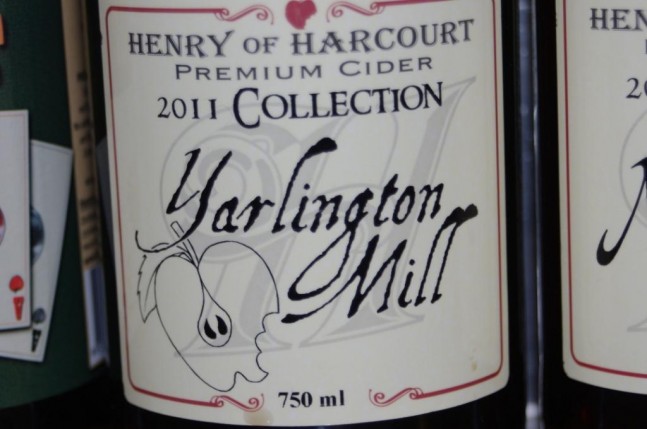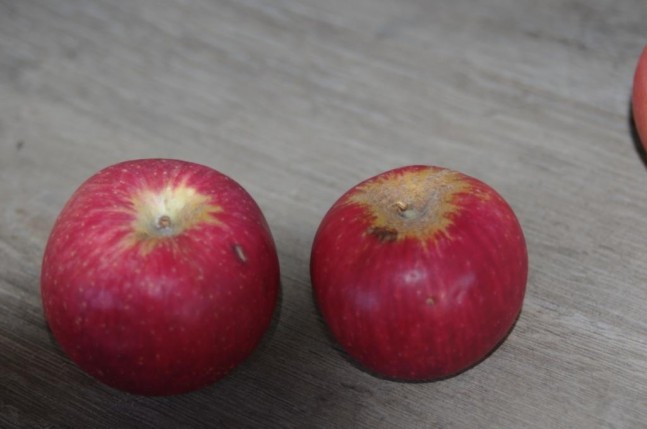Our Melbourne correspondent, Andrew Jenkins, is on the trail of dry cider in Australia and discovers a particularly good vintage 2011 up in Harcourt.
This was supposed to be easy: just get a whole lot of samples in and start tasting, remembering to take detailed notes.
I started with a random selection from the refrigerator at the local bottle shop, and ended up with Three Oaks Original Cider which, the label informed me, was handcrafted from crushed apples, etc. This was a small comfort to me, as I was after a cider. The result was a very sweet, appley beverage, with a sour aftertaste; a bit flat and unbalanced. Nothing wrong with that, but way too sweet for my taste.
My preference has always been for ciders on the dry side, so decided to take advice on what to try next. Off to another bottle shop, and now well aware of my limited knowledge, I asked one of the (young) staff members there, who would be able to advise me on cider. “That would be me” came the reply and so with confidence I asked to be steered in the direction of a selection of dry ciders. I was steered in the direction of Three Oaks Original Cider.
So, I have now learned that what the Australian cider drinker in general is wanting and getting, is something on the sweet side. Rather reminded me of the old English sherry merchant saying, “make it sweet and call it dry”. Many soft drinks have levels of sweetness at around 100 plus grams per litre; punter cider weighs in at levels up to and beyond 80 grams, and perhaps this is why cider is replacing so-called “alcopops” so easily.
Later, somewhat disheartened, I set off for Harcourt (an hour and a half north west of Melbourne), where there are a lot of apples and pears grown and there are two “artisan” cider makers. The first apple orchard was planted in Harcourt in 1859. I ended up at Henry of Harcourt www.henrycider.com where the Henry family has been making and selling cider for around 15 years.

Yarlington Mill 2011
Kingston Black, Yarlington Mill, Michelin and Improved Foxwelp are not names familiar to me, compared with Fuji, Gala, Red Delicious, Jonathan and Granny Smith. The former group is pretty much inedible due to high acid and tannin content, but are prized as cider apples. The latter group is edible (very), but make poor cider as they lack sufficient acid and tannin to make a bright, focussed cider.
Drew Henry escorted me through a tasting of his ciders and perrys; I had read in promotional literature about his ciders “expect to be challenged”, and I was. These are bone dry, delicately flavoured and characterful.
Henry of Harcourt Original Cider is made from Pink Lady apples and has a refreshing crisp apple flavour, dry, with a clean acid finish. It’s bone dry, but easy to drink. Duck & Bull is a blend of Pink Lady with traditional cider apples and you can see both the attractive freshness of Pink Lady with a touch of astringency to finish.
Henry of Harcourt Black Fox 2011 (yes, a vintage dated cider) is made from traditional varieties Improved Foxwelp, Kingston Black and Bulmers Norman. Here there is again a bone dry, delicate and surprisingly long flavoured cider, with noticeable crisp acidity. Try this with pan seared salmon, for a major sensation; the acidity deals with the texture of the fish while the flavours meld beautifully.
Henry of Harcourt Yarlington Mill 2011 is made 100% from the variety of the same name and is a lacy, racy fresh and tangy cider, quite tannic to finish. To be had with game or pork according to Drew Henry.
My stand out in the tasting was Henry of Harcourt Kingston Black 2011. Whilst in the house style, bone dry, this had ripe, plump apple flavours combined with bracing acidity and a slightly firm finish. One you would drink with pleasure with or without food.
Along with the Henry of Harcourt Perry (Beurre Bosc pears, dry as a chip with fresh crisp pear flavour) all of these are bottle conditioned and will throw a slight sediment. If you don’t want the sediment, use a steady hand when pouring, but I wouldn’t waste it myself.
Other products here include 2Pear 2011 (a blend of crisp Pink Lady apples and subtle Winter Nellis pears; eminently drinkable) the Harcourt Cider and Perry (made in a slightly sweeter style, but very well balanced; these are made from local apples and are designed to get “appellation” Harcourt established for cider and perry) and fortified pear and apple wines called Bosca, which go well enough on their own, but pouring over ice-cream was recommended, and I will try the combination shortly.
Henry of Harcourt is at 219 Reservoir Road, Harcourt and well worth a visit but if you are not up for the trip, visit the website for establishments where the products are available (www.henrycider.com). While you are in Harcourt or just passing by, Bress at 3894 Calder Highway, Harcourt is well worth seeking out for its range of superb wines, cider and other produce (www.bress.com.au). And if you are making a weekend of it, the nearby Heathcote and Bendigo wine regions beckon and there are plenty of bed and breakfast and more traditional options for a good night’s rest.
I am now steeling myself for the job of tasting my way through the cider and perry market. Part Three is on the way.

Cider Report Part 2 - Kingston Black - Ideal for Cider
|
|
Tweet |






No comments to Cider Report – Part Two | Comments Feed
No comments yet
The comments are closed.